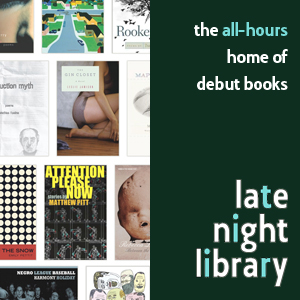Film
The Foreign in the Familiar: Unheimlich and The Films of The Quay Brothers

By Sarah Kruse
I want to proceed quickly, but also can’t turn away. Strangely unsettling, and fascinating, the Quay Brothers invoke the same reaction as staring at a wreck on the highway. What is it that both horrifies us and makes us unable to stop looking? Master puppeteers working largely with stop-motion film, The Quay Brothers have created an oeuvre—and MOMA has organized an exhibit—that feels like modern surrealism shot through with a contemporary edge.
I’ve forgotten the name of the film I could not turn away from, but distinctly remember where I broke in on it. Playing in a loop, it is almost impossible in the Quay’s dark world, which can only be described as a landscape of dark interiority, to determine where beginnings and endings exist. The beginning is simply where our experience began.
Is it possible that what I cannot turn away from is somehow an echo of myself? In a dark corner that recedes asymmetrically, I’m reminded of an installation I once saw at the Dali Museum in Paris. In a scatter of chairs in front of one screen, a fellow has, I think, fallen asleep. Taking a seat behind him, I’m backlit, and my shadow, taller than I am, strikes me as sinister, as if I’ve become some broken decaying object in one of these films. Heavily influenced by modern composers like Prokofiev and Schoenberg, the accompanying scores to the films edge towards the atonal, and only after coming to the end of the exhibit do I realize the percussion somewhat mimicked the rhythm of a human heart beat—the kind of knocking that occurs when adrenaline is running high.

What “happens” in one of the Quays’ films is difficult to distinguish. Perhaps this is the reason I seem incapable of finding a beginning or ending in what plays as a continuous loop. The movements and gestures are small. The action is small, and yet I can’t help feeling that something has taken root somewhere deep in my brain. Toward the end of the exhibit, leaning against a dark grey wall, I’m watching “Absentia” and trying to figure out why it terrifies me. A close up of a woman’s handwriting. Extreme close up of pen scratching across paper. A low angle of a clock that serves as the “mailbox” for this madwoman in an institution who obsessively writes letters that will never arrive to an estranged husband. Low angle shots have always been sinister, the hallmark of German Expressionist film and film noir, but many of the isolated parts of what the Quay brothers masterfully piece together are transformed through collage. Separate elements by themselves are, perhaps, not disturbing, but through amplification—of precisely the small, of objects or movements that seem like they should be familiar, or even are familiar—these elements become suddenly foreign. Most of us have experienced uncanny moments in life when the familiar, out of context, becomes foreign. One is caught off guard by one's own reflection in a plate glass window, for instance—just as I was when, entering the exhibit, I had the same experience.
What I strangely find as most disturbing is that many of the objects the Quays use are things that should exist as ordinary objects. Alright, in all fairness, porcelain dolls may always be a bit creepy, but both dolls and stuffed animals that should be familiar from childhood, or ordinary objects like screws, clocks, and scales, are recontextualized in the films of the Quays so they express only uncanny qualities: dolls we see only the feet of, screws and bolts refigured into alien creatures, a stuffed rabbit reworked into a horrifying object with yellowing teeth that has no resemblance to any kind of velveteen rabbit, and yet still garners my sympathy on some odd level. Houses dark and crumbling, gothic and Victorian, the ruined object of beauty is far more grotesque than the ugly alone. What could have been or even once was, but is now lost, conveys something for more disturbing that what merely shocks us.
The unheimlich. The “un-homely,” literally, in German. The unheimlich is us. When we are caught off guard from the grind of routine, repurposed into a new context, we no longer recognize ourselves. Perhaps that is why I can’t turn away, but want to. What don’t I recognize in myself? Something of rhythm, something of the small suspended for a day in an alternate world, possessing the quality of dreams we feel the essence of, but whose actual events we remember nothing of by morning.
“Quay Brothers: On Deciphering the Pharmacist’s Prescription for Lip-Reading Puppets” closed at MoMA on January 7, 2013.
 Sarah Kruse lives in Providence, Rhode Island. She has been a staff writer at the magazine since 2009.
Sarah Kruse lives in Providence, Rhode Island. She has been a staff writer at the magazine since 2009.



